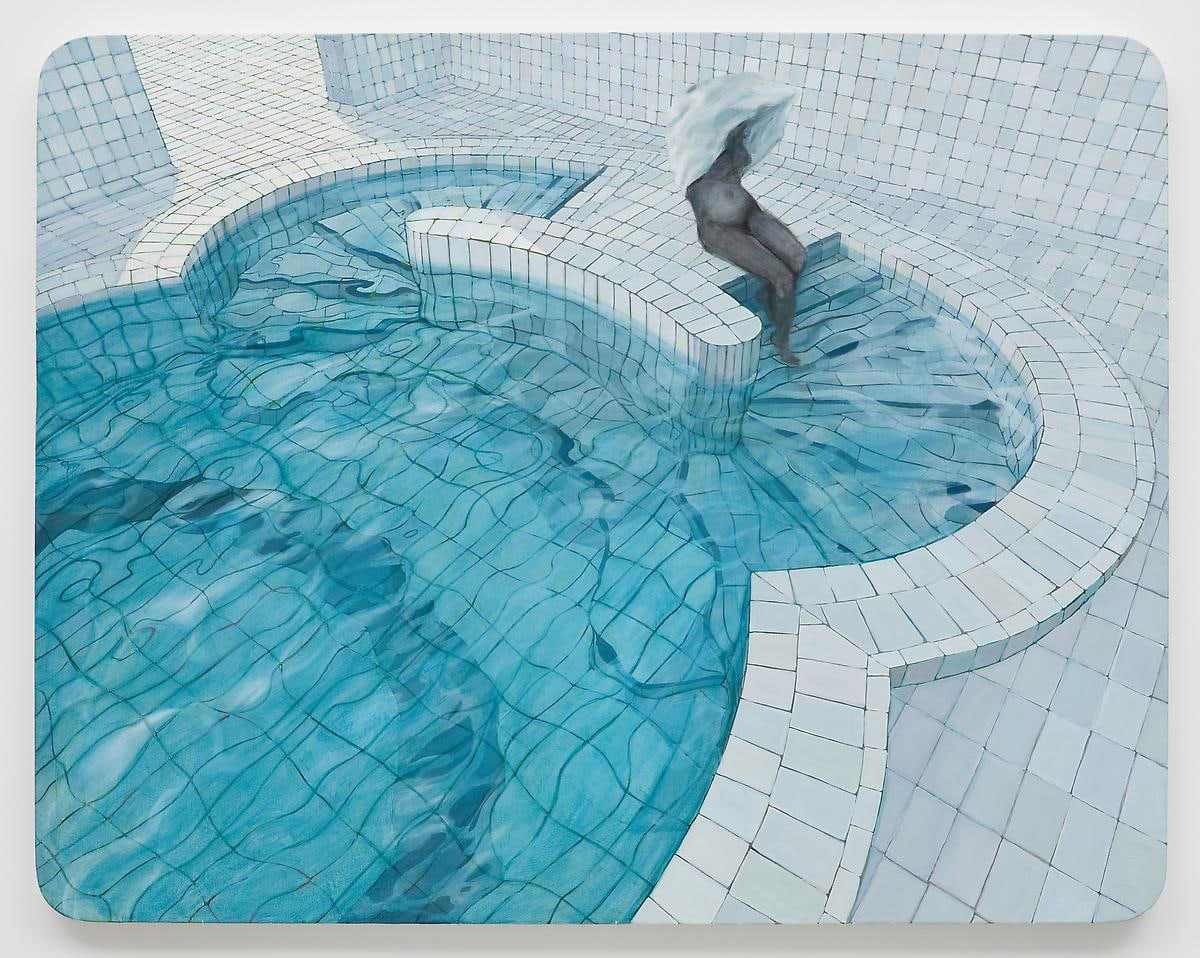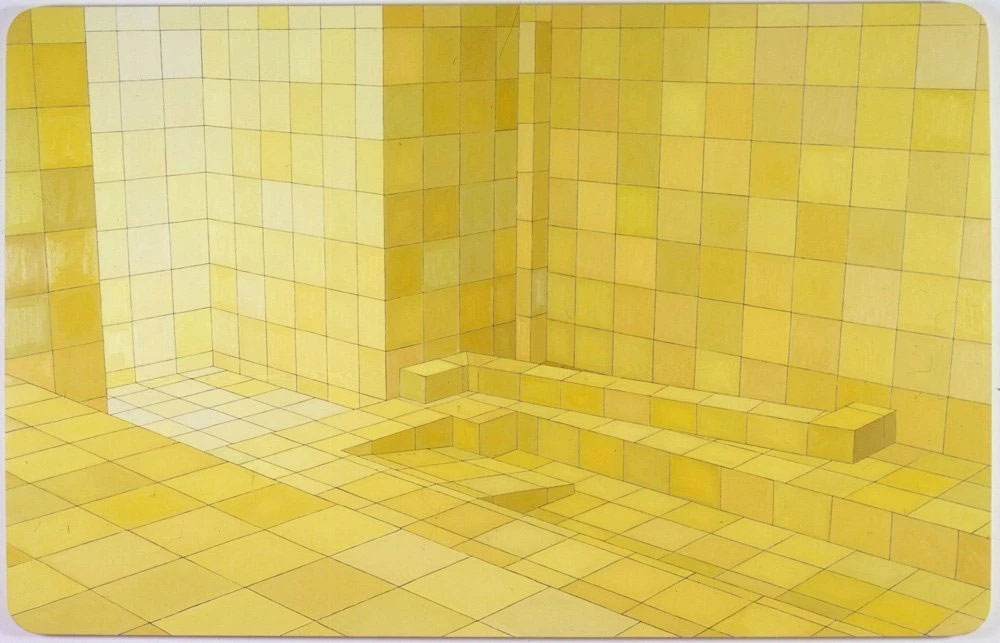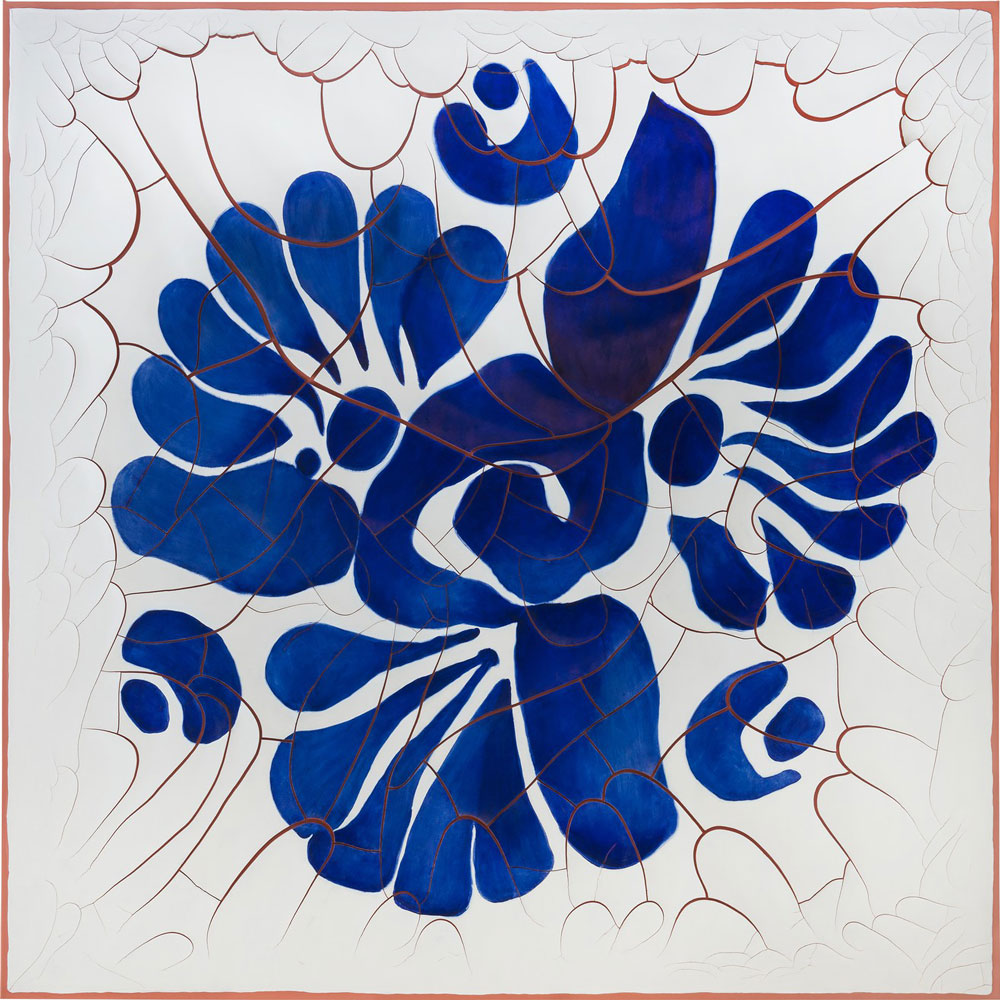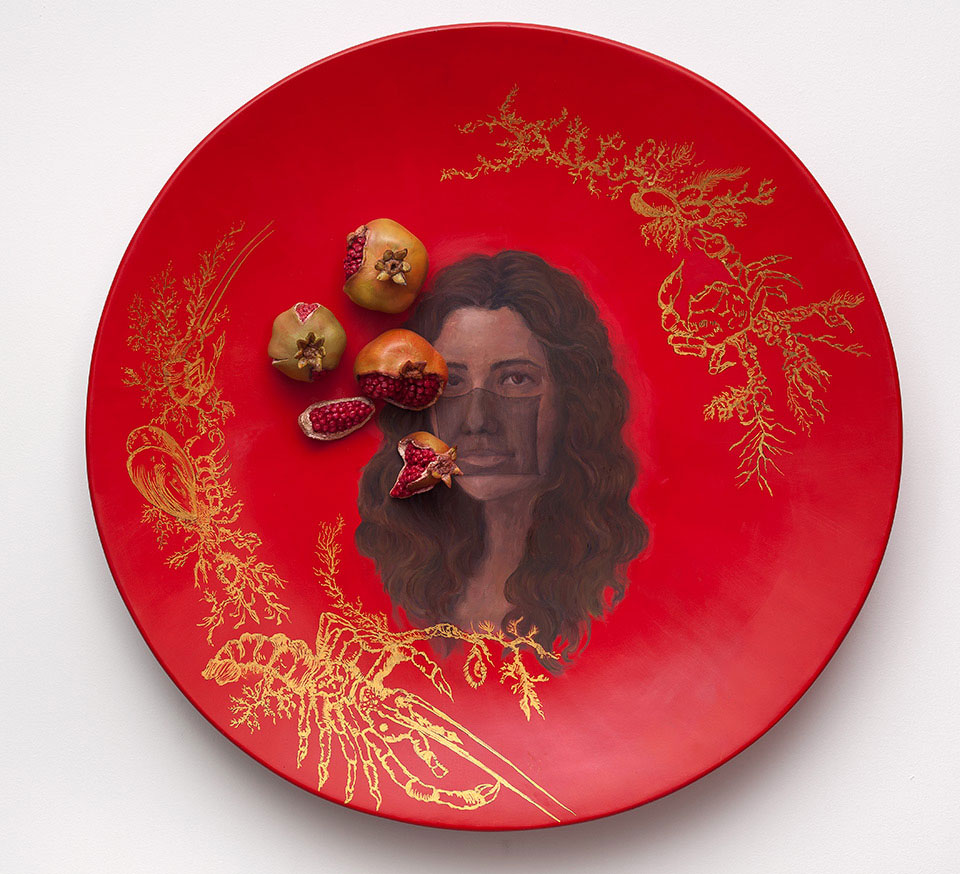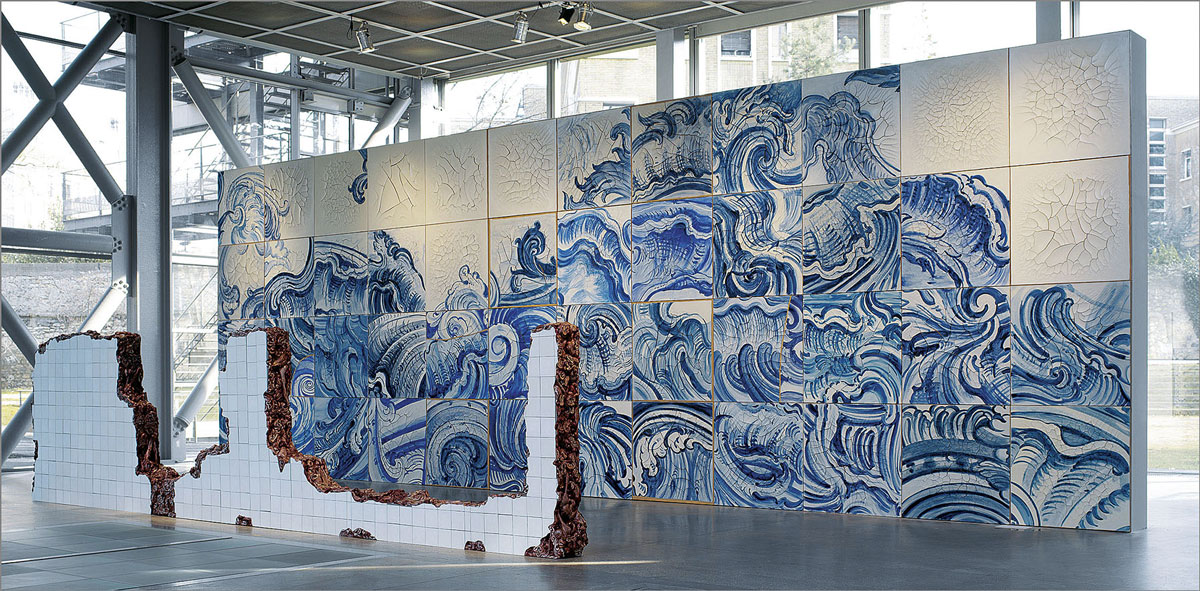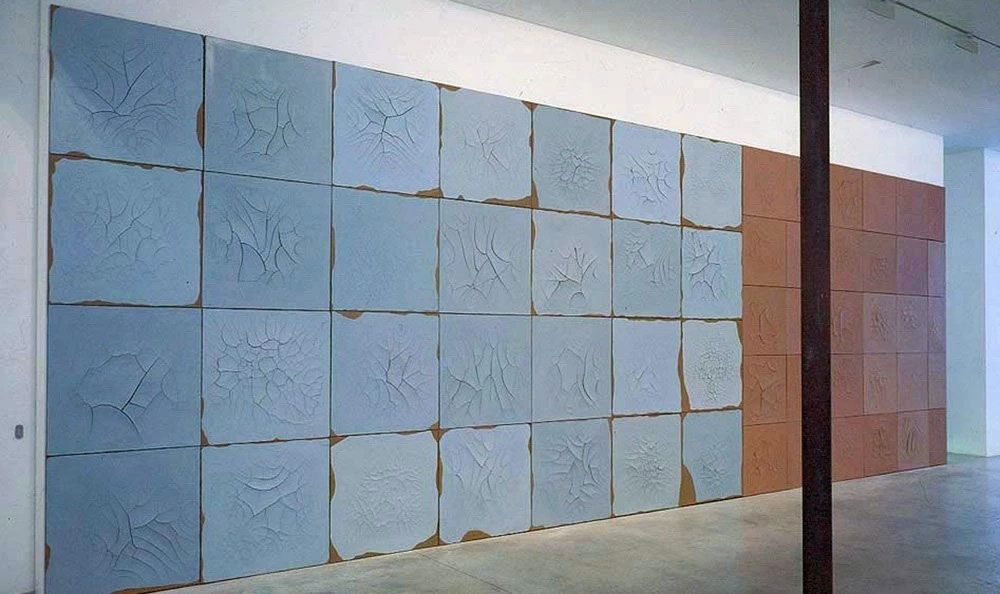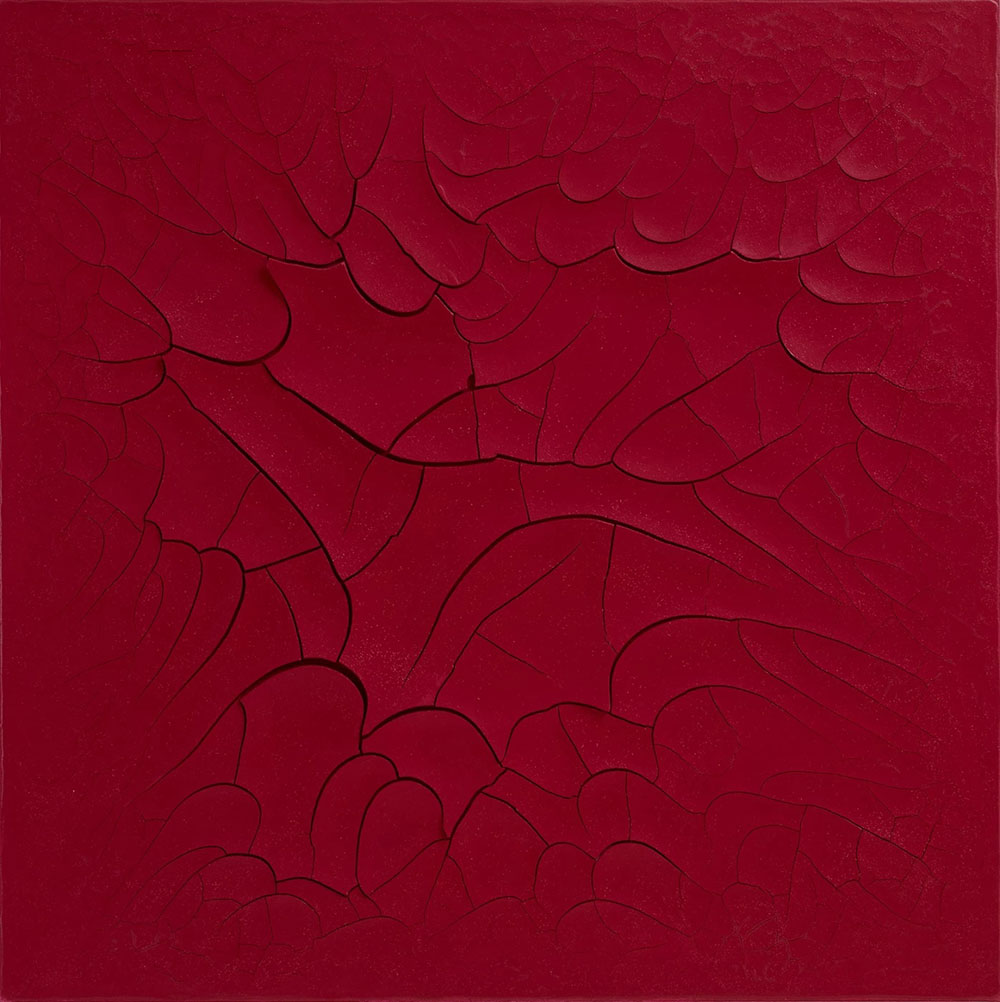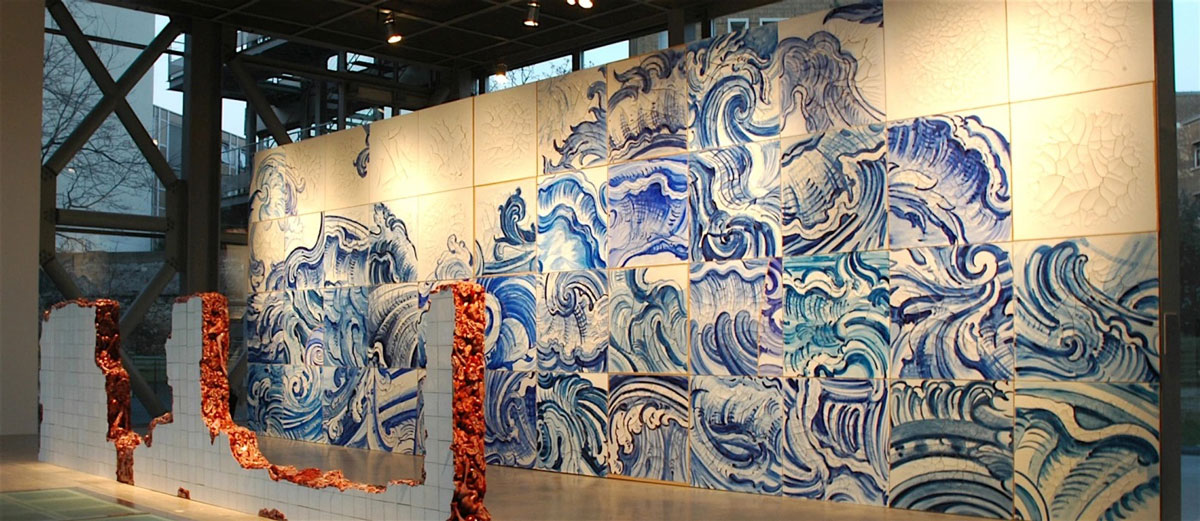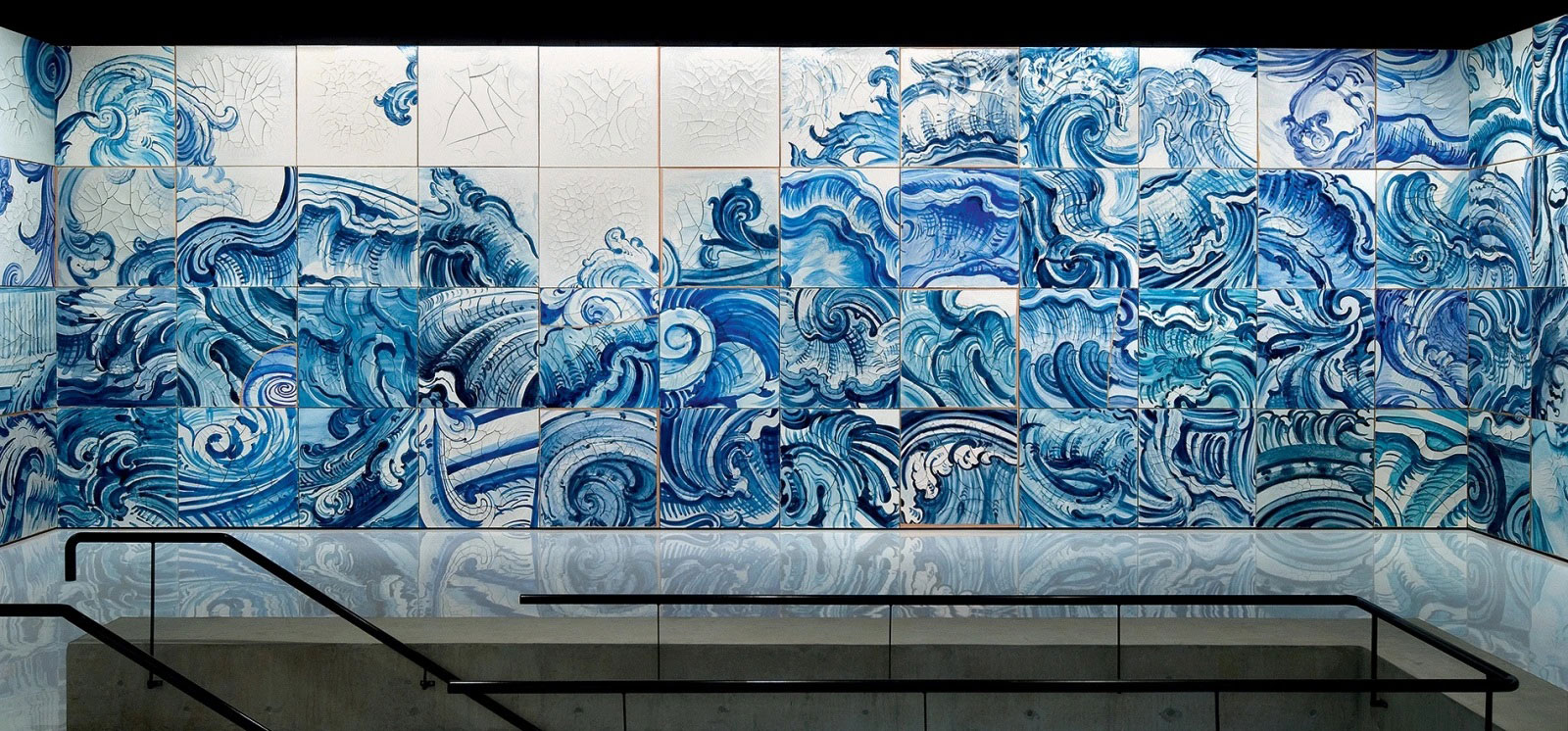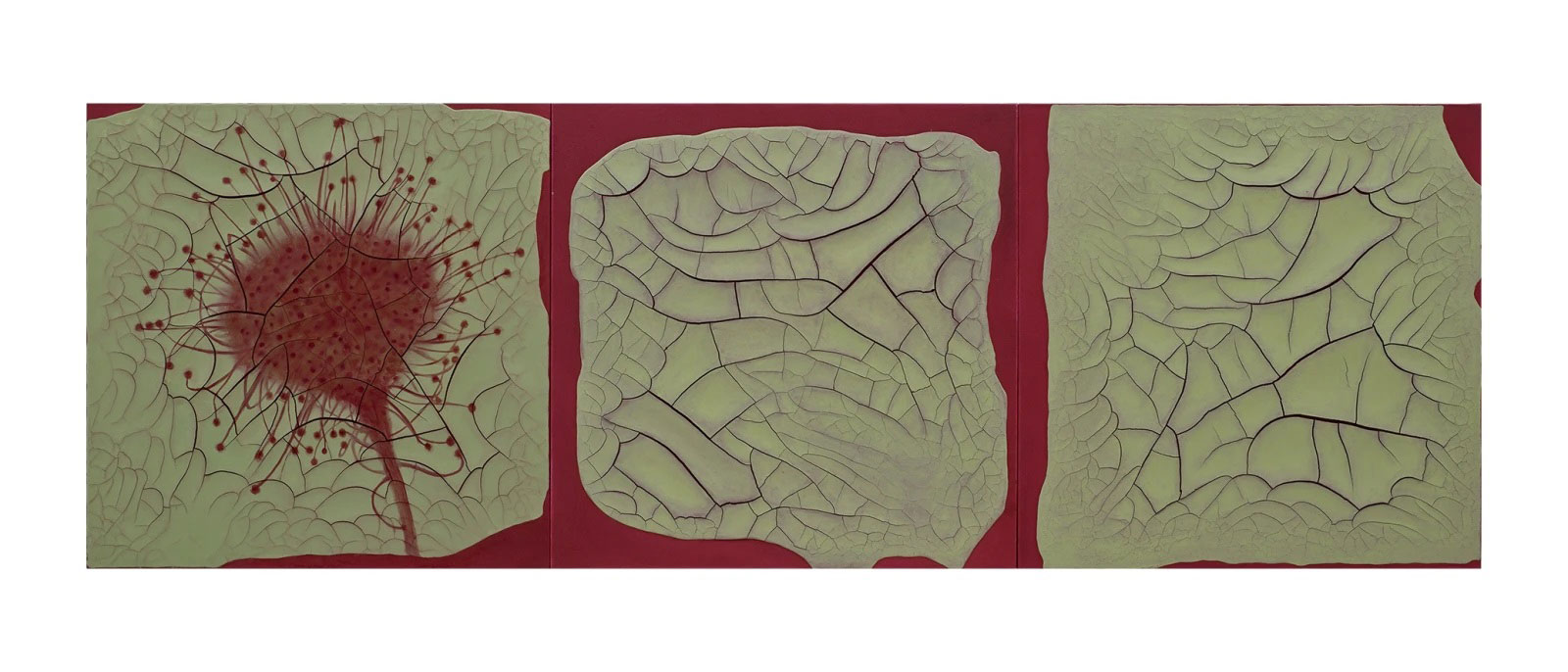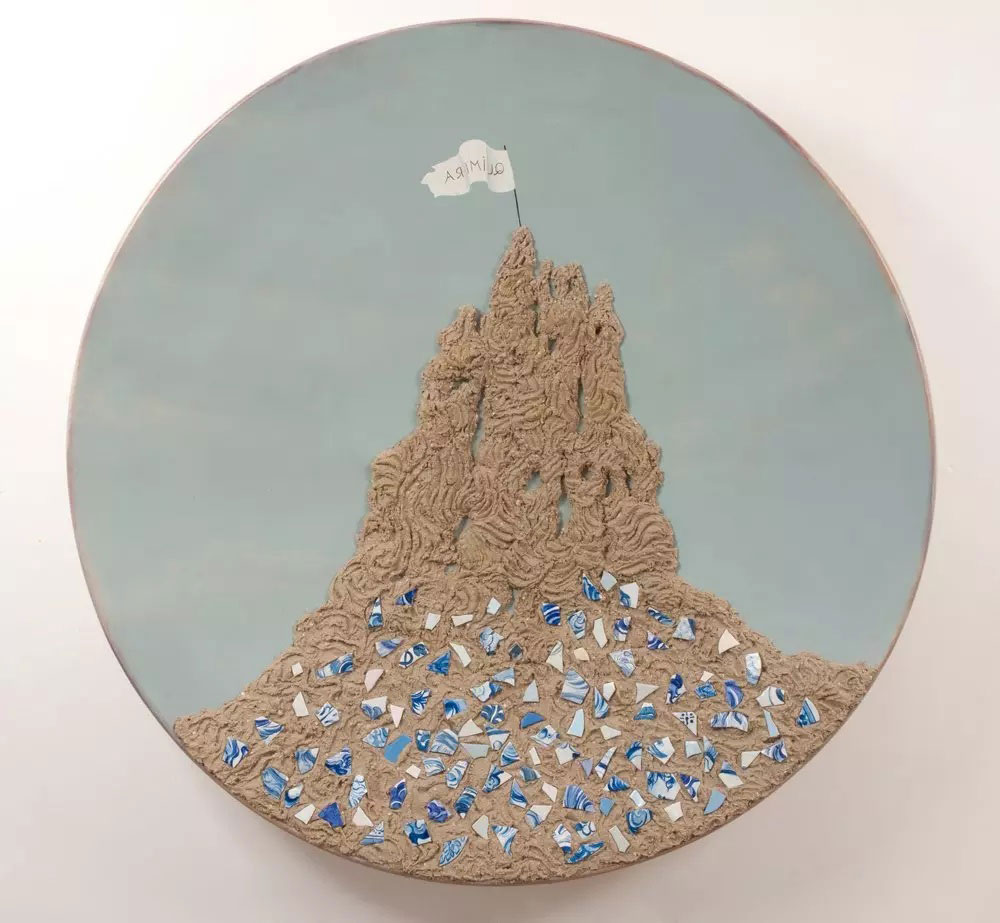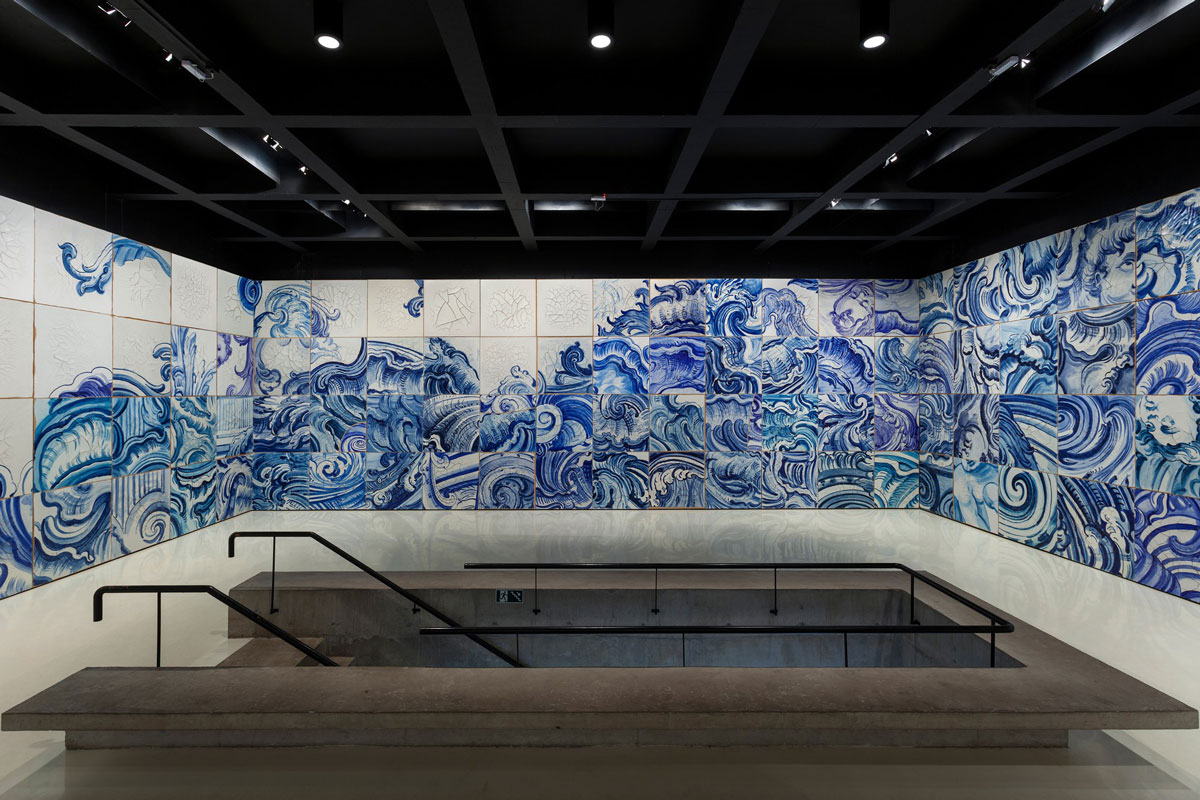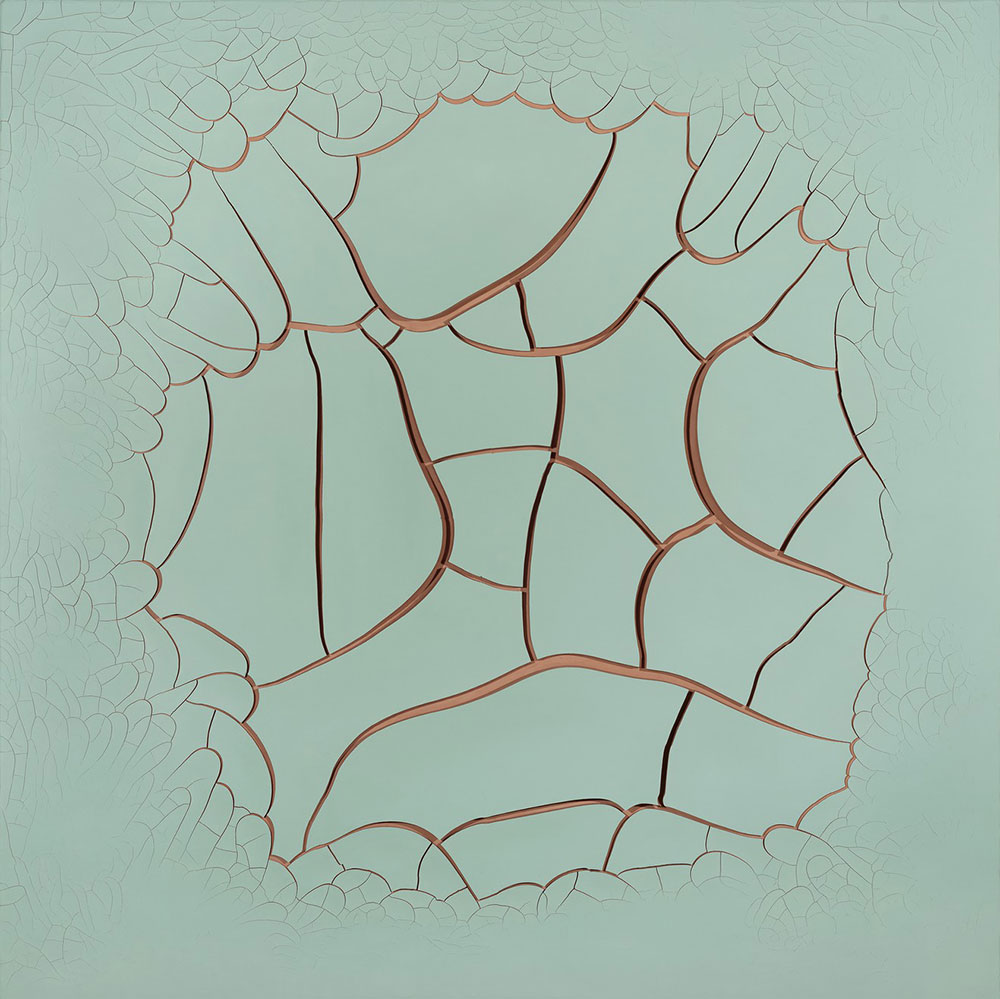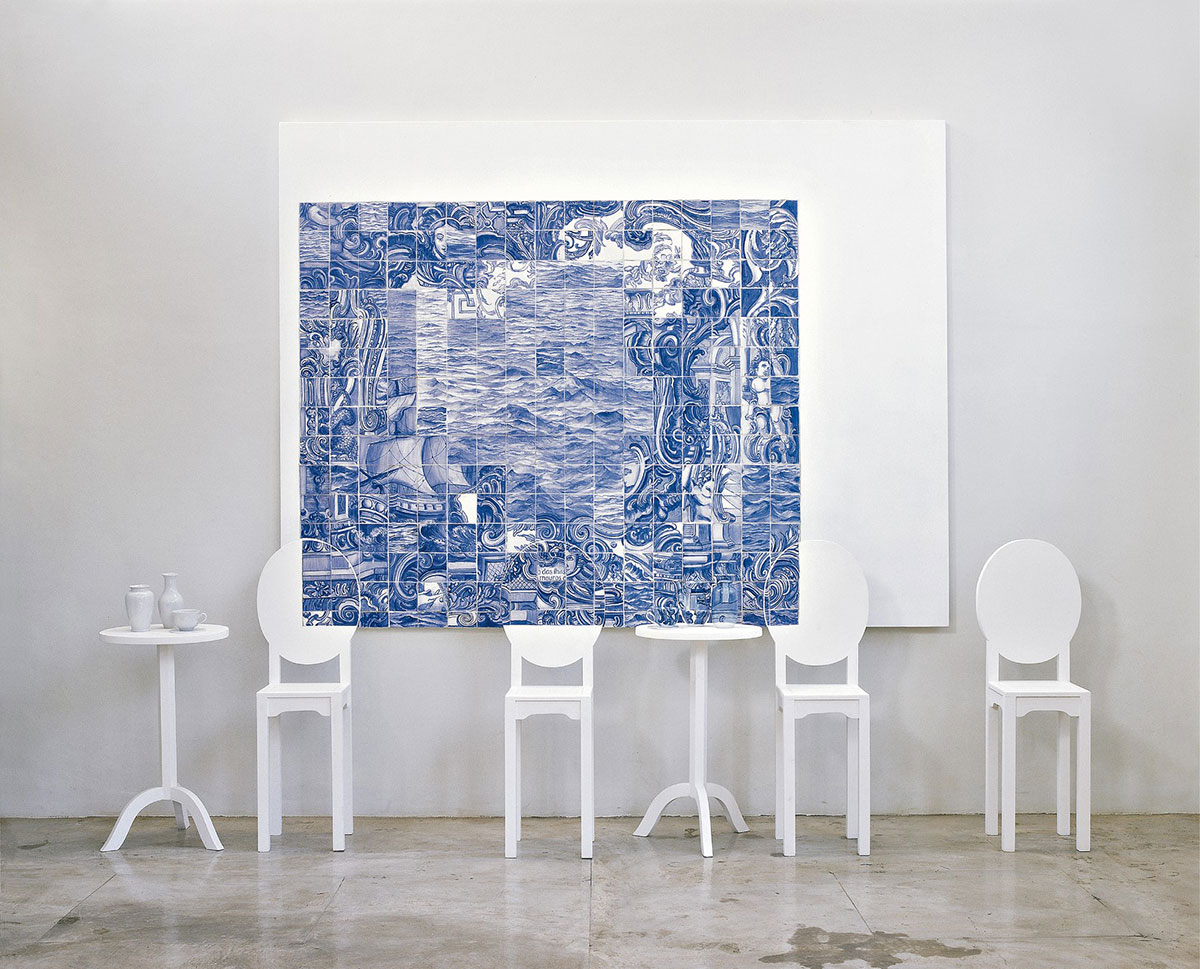TRACES: Adriana Varejão
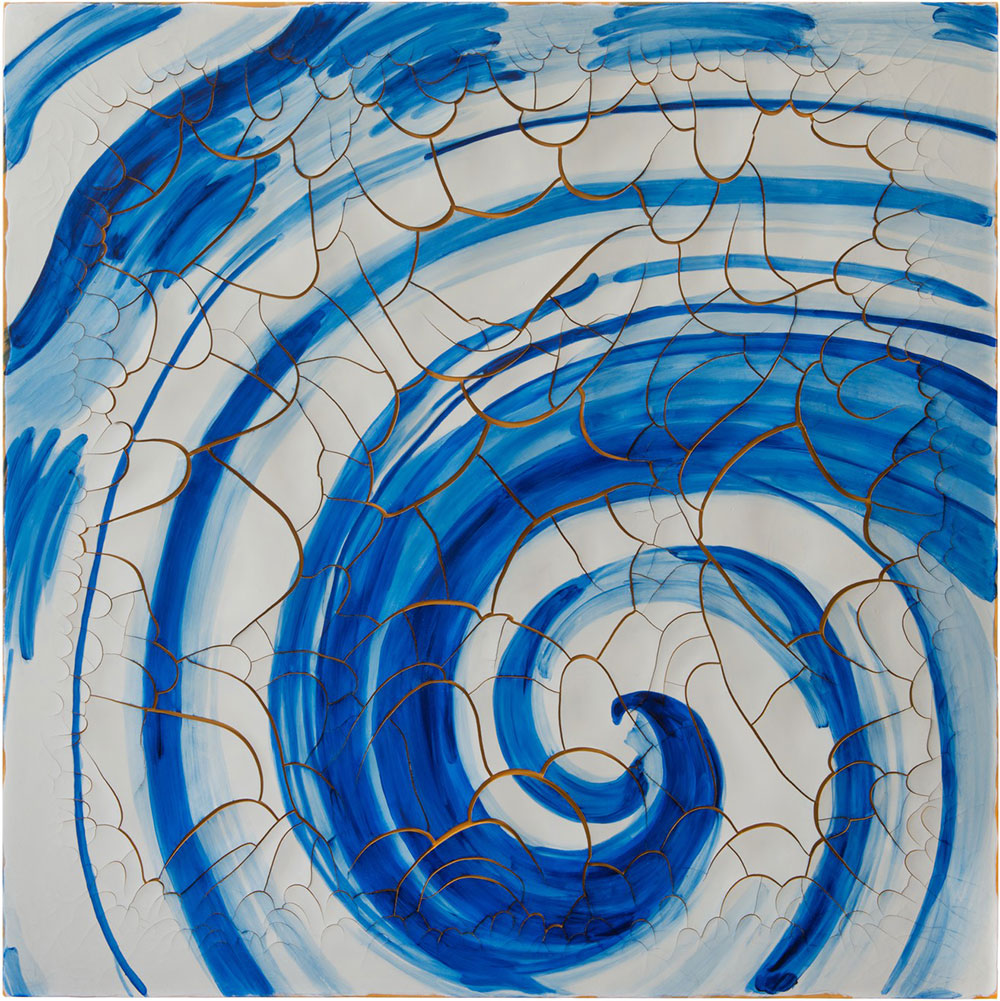 Today is the occasion to bear in mind one of the most original and significant voices in contemporary Brazilian art, Adriana Varejão (11/11/1964- ), who is celebrated internationally as a painter whose work addresses the complex, interweaving themes of history, memory and culture, and decolonial narratives. The cracked tile has been a recurring motif in Varejão’s work since early in her career and in visceral monochromatic works, she draws particularly on the history of Portuguese Azulejo tilework and the legacy of Brazil’s colonial past. From the mid-1990s, the artist explored two juxtaposing motifs within her practice – flesh and tiles (or azulejos).
Today is the occasion to bear in mind one of the most original and significant voices in contemporary Brazilian art, Adriana Varejão (11/11/1964- ), who is celebrated internationally as a painter whose work addresses the complex, interweaving themes of history, memory and culture, and decolonial narratives. The cracked tile has been a recurring motif in Varejão’s work since early in her career and in visceral monochromatic works, she draws particularly on the history of Portuguese Azulejo tilework and the legacy of Brazil’s colonial past. From the mid-1990s, the artist explored two juxtaposing motifs within her practice – flesh and tiles (or azulejos).
By Efi Michalarou
 Adriana Varejão was born in Rio de Janeiro in 1964. In the 1980s, Varejão was an engineering student. However, it was thanks to a bohemian artist Elizabeth Taylor’s performance that she decided to also pursue a career in art. She then quit university and achieved global recognition as a contemporary artist. Varejão appropriates stylistic traditions that were introduced to Brazil upon colonial encounter. Since Brazil is one of the most ethnically diverse countries in the world, it has undoubtedly informed her style as an artist. Over the course of her 30-year career, Varejão has created a number of series which represent the identity, culture and race, and by implication, also the construction of her own identity. Varejão attended the Escola de Artes Visuais do Parque Lage from 1983 to 1985. In 1986 she started to work with oil painting, recreating in thick impasto the ornate Baroque frescoes and religious relics of the eighteenth-century churches in Ouro Preto, Minas Gerais, Brazil. In her early series “Baroque” (1987-92), Varejão explores the ornate style that arrived with the conquistadors. In 1992, Varejão spent three months traveling in China, where she was able to learn Song dynasty ceramics and classical Chinese landscape painting. She then began to realize how European narratives were altering pieces of history that were told through art, which signaled the start of a series of subversions of well known imageries disrupted by bloody gashes and fleshy extrusions. In the series “Terra Incognita” (1991–2003), she utilized the Dutch, Portuguese, and Chinese pictorial traditions imported in the seventeenth century. With her series “Proposal for a Catechesis” (1993–99), Varejão began to incorporate the decorative terracotta tiles, or azulejos, which served as a visual manifestation of the Portuguese presence in Brazil beginning in the eighteenth century. Here the vulnerable skin of the canvas and tile are spliced open to reveal the corporeal violence lying beneath the smooth illusionism of the painted surface and, symbolically, the historical narratives. Varejão’s paintings became increasingly sculptural, introducing elements that extended beyond the canvas, and she soon transitioned to sculpture and installation. The artist however, only became popular in the late 1990s with her provocative paintings involving elements from traditional Portuguese ceramic tiles, azulejos. Her tile work demonstrates coldly beautiful spa settings that invoke the feel of cracks beneath the beautiful surface. She utilizes color and shadow to create hints of hidden mysteries in her pieces, and this is especially common in multiple of her 2004 tile creations. In 1999, she uses a similar approach where her works suggest that familiar spaces are haunted by violent specters through freestanding sculptures that represent in a way the spatial drama of the Baroque. By the time the artist initiated the series “Jerked-beef Ruins” (2000–04), the decorative, distinctly European tiles gave way to more universal pale blue or white tiles found in public buildings or bathrooms. In these sculptures, the cadaverous contents do not burst from the center as they had in her earlier pieces, but rather lurk hidden within, exposed only at the edges of the smooth facade. In 2001, she continues the theme of hidden mysteries with The “Saunas and Baths” series where tiled interiors painted in intricate monochromatic gradations appear to be psychologically charged. In these complex labyrinths, light beams from an imperceptible source and traces of the human body appear, in the form of stray hairs or blood. A permanent pavilion devoted to Adriana Varejão’s work opened in 2008 at Instituto Inhotim in Brazil. An element of the installation – a mural of blue-on-white cracked tile paintings featuring baroque motifs suggest aquatic themes – was interpreted for a major commission for the Rio 2016 Olympic Games, where a fabric reproduction of the work enveloped the Aquatic Stadium. Varejão has long been fascinated by themes of miscegenation and skin colour, and the ambivalent notion of interracial identity in Brazil. For “Polvo” (2013), Varejão created her own oil paints, named after thirty-three definitions of skin colour taken from a 1976 household survey conducted by the IBGE (Brazilian Institute of Geography and Statistics). The artist selected some of the more exotic and poetic terms, including Fogoió (Fox on Fire Red), Branquinha (Snow White), Burro-quando-foge (Faded Fawn) and Morenão (Big Black Dude) and painted a series of self-portraits in an academic style using these paints. In recent years, Varejão has developed an interest in the culture of pre-Hispanic, colonial, and modern Mexico. In January 2017, she visited the Museo Amparo in Puebla to study local talavera and cholula polychrome pottery. Her following engagement with talavera, has catalyzed a new direction in her paintings in which the clean shapes and bright hues of hard-edge abstraction are brought into dialogue with pre-Hispanic artisanal forbears. Through this intersection of time, culture, and place, Varejão brings light to the parallels between aesthetic systems and raises crucial questions about the life of forms in art.
Adriana Varejão was born in Rio de Janeiro in 1964. In the 1980s, Varejão was an engineering student. However, it was thanks to a bohemian artist Elizabeth Taylor’s performance that she decided to also pursue a career in art. She then quit university and achieved global recognition as a contemporary artist. Varejão appropriates stylistic traditions that were introduced to Brazil upon colonial encounter. Since Brazil is one of the most ethnically diverse countries in the world, it has undoubtedly informed her style as an artist. Over the course of her 30-year career, Varejão has created a number of series which represent the identity, culture and race, and by implication, also the construction of her own identity. Varejão attended the Escola de Artes Visuais do Parque Lage from 1983 to 1985. In 1986 she started to work with oil painting, recreating in thick impasto the ornate Baroque frescoes and religious relics of the eighteenth-century churches in Ouro Preto, Minas Gerais, Brazil. In her early series “Baroque” (1987-92), Varejão explores the ornate style that arrived with the conquistadors. In 1992, Varejão spent three months traveling in China, where she was able to learn Song dynasty ceramics and classical Chinese landscape painting. She then began to realize how European narratives were altering pieces of history that were told through art, which signaled the start of a series of subversions of well known imageries disrupted by bloody gashes and fleshy extrusions. In the series “Terra Incognita” (1991–2003), she utilized the Dutch, Portuguese, and Chinese pictorial traditions imported in the seventeenth century. With her series “Proposal for a Catechesis” (1993–99), Varejão began to incorporate the decorative terracotta tiles, or azulejos, which served as a visual manifestation of the Portuguese presence in Brazil beginning in the eighteenth century. Here the vulnerable skin of the canvas and tile are spliced open to reveal the corporeal violence lying beneath the smooth illusionism of the painted surface and, symbolically, the historical narratives. Varejão’s paintings became increasingly sculptural, introducing elements that extended beyond the canvas, and she soon transitioned to sculpture and installation. The artist however, only became popular in the late 1990s with her provocative paintings involving elements from traditional Portuguese ceramic tiles, azulejos. Her tile work demonstrates coldly beautiful spa settings that invoke the feel of cracks beneath the beautiful surface. She utilizes color and shadow to create hints of hidden mysteries in her pieces, and this is especially common in multiple of her 2004 tile creations. In 1999, she uses a similar approach where her works suggest that familiar spaces are haunted by violent specters through freestanding sculptures that represent in a way the spatial drama of the Baroque. By the time the artist initiated the series “Jerked-beef Ruins” (2000–04), the decorative, distinctly European tiles gave way to more universal pale blue or white tiles found in public buildings or bathrooms. In these sculptures, the cadaverous contents do not burst from the center as they had in her earlier pieces, but rather lurk hidden within, exposed only at the edges of the smooth facade. In 2001, she continues the theme of hidden mysteries with The “Saunas and Baths” series where tiled interiors painted in intricate monochromatic gradations appear to be psychologically charged. In these complex labyrinths, light beams from an imperceptible source and traces of the human body appear, in the form of stray hairs or blood. A permanent pavilion devoted to Adriana Varejão’s work opened in 2008 at Instituto Inhotim in Brazil. An element of the installation – a mural of blue-on-white cracked tile paintings featuring baroque motifs suggest aquatic themes – was interpreted for a major commission for the Rio 2016 Olympic Games, where a fabric reproduction of the work enveloped the Aquatic Stadium. Varejão has long been fascinated by themes of miscegenation and skin colour, and the ambivalent notion of interracial identity in Brazil. For “Polvo” (2013), Varejão created her own oil paints, named after thirty-three definitions of skin colour taken from a 1976 household survey conducted by the IBGE (Brazilian Institute of Geography and Statistics). The artist selected some of the more exotic and poetic terms, including Fogoió (Fox on Fire Red), Branquinha (Snow White), Burro-quando-foge (Faded Fawn) and Morenão (Big Black Dude) and painted a series of self-portraits in an academic style using these paints. In recent years, Varejão has developed an interest in the culture of pre-Hispanic, colonial, and modern Mexico. In January 2017, she visited the Museo Amparo in Puebla to study local talavera and cholula polychrome pottery. Her following engagement with talavera, has catalyzed a new direction in her paintings in which the clean shapes and bright hues of hard-edge abstraction are brought into dialogue with pre-Hispanic artisanal forbears. Through this intersection of time, culture, and place, Varejão brings light to the parallels between aesthetic systems and raises crucial questions about the life of forms in art.

